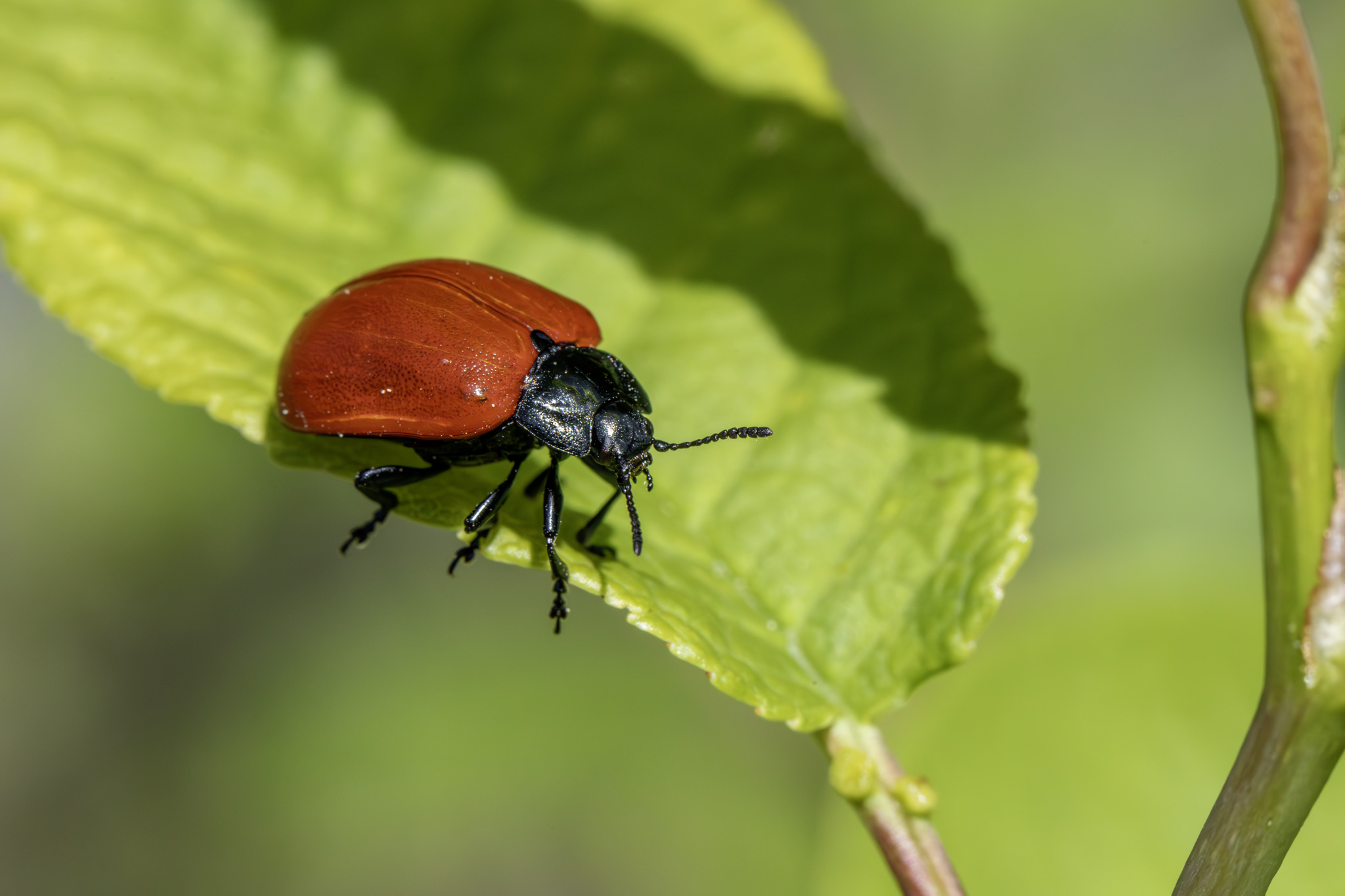Advertisements
The Red Poplar Leaf Beetle, scientifically known as Chrysomela populi, is a member of the family Chrysomelidae. This beetle is known for its bright coloration and its association with poplar trees. Here are some key features and characteristics of the Red Poplar Leaf Beetle:
- Appearance:
- Size: Adult beetles typically measure about 8 to 12 millimeters (0.3 to 0.5 inches) in length.
- Color: They have a striking appearance with a bright red or orange elytra (wing covers) and a black head, thorax, and legs. The contrast in colors makes them quite noticeable.
- Shape: The body is oval and slightly flattened, typical of many leaf beetles.
- Habitat:
- The Red Poplar Leaf Beetle is primarily associated with poplar (Populus) and willow (Salix) trees. It is commonly found in forests, woodlands, along riversides, and in areas where these host trees are abundant.
- They thrive in temperate regions and are often seen on the leaves of their host plants during the growing season.
- Distribution:
- This species is widely distributed across Europe and parts of Asia. It has been reported in various countries where poplar and willow trees grow.
- Diet and Feeding Habits:
- Adults and Larvae: Both adult beetles and their larvae feed on the leaves of poplar and willow trees. They consume the leaf tissue, leaving behind characteristic holes and feeding damage. Heavy infestations can lead to significant defoliation.
- The larvae are often found on the underside of leaves, where they are somewhat protected while feeding.
- Lifecycle:
- The Red Poplar Leaf Beetle undergoes complete metamorphosis, including egg, larval, pupal, and adult stages.
- Eggs: Females lay clusters of yellowish eggs on the underside of leaves.
- Larvae: Upon hatching, the larvae are yellowish with black spots and are gregarious in the early stages. As they mature, they become more dispersed.
- Pupation: Larvae eventually pupate, often in the soil or leaf litter at the base of the host tree.
- Adults: New adults emerge, typically having one or two generations per year depending on the climate and environmental conditions.
- Behavior:
- The beetles are active during the warmer months and can often be seen on the leaves of their host plants.
- Both larvae and adults exhibit a defensive behavior where they can secrete chemicals to deter predators.
- Economic Impact:
- While the Red Poplar Leaf Beetle can cause significant defoliation, it is generally not considered a major pest. However, in high numbers, they can stress young trees or ornamental plantings of poplar and willow, leading to reduced growth and vitality.
- They can be of particular concern in poplar plantations where the trees are grown for timber or other commercial uses.
- Control and Management:
- Monitoring: Regular monitoring of poplar and willow trees can help detect early signs of infestation. Look for feeding damage and the presence of adults and larvae on the leaves.
- Biological Control: Natural predators, such as birds and predatory insects, often help keep beetle populations in check.
- Chemical Control: In cases of severe infestation, insecticides may be used. However, this should be done with caution to avoid harming non-target species and the surrounding ecosystem.
- Cultural Practices: Maintaining tree health through proper watering and fertilization can make trees more resilient to insect damage.
Overall, the Red Poplar Leaf Beetle (Chrysomela populi) is a visually striking beetle that plays a role in the ecosystem by feeding on poplar and willow leaves. While not typically a major pest, it can cause noticeable damage in high numbers and should be monitored in areas where these trees are of economic or ecological importance.
Visited 213 times, 27 visit(s) today
Views: 375
Subscribe to the newsletter:
